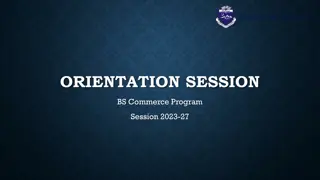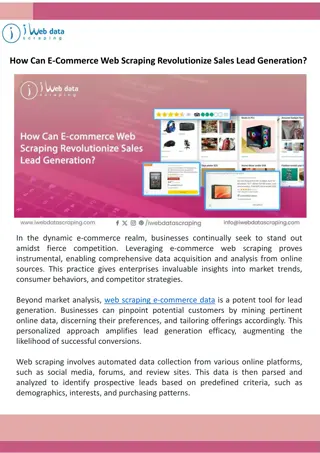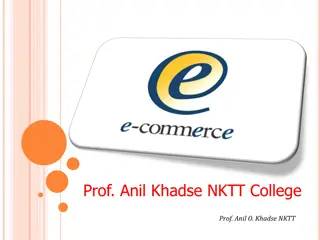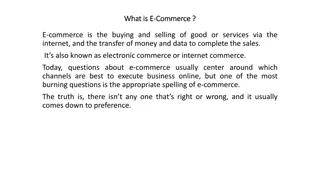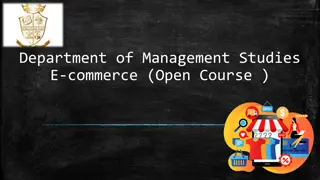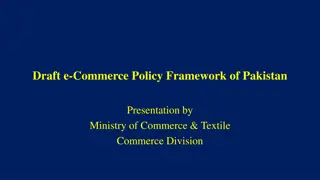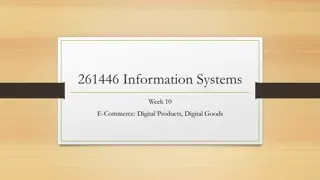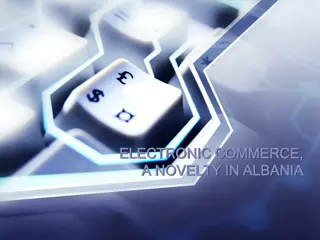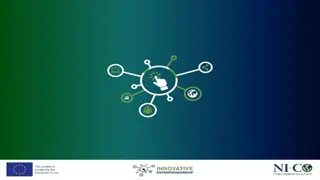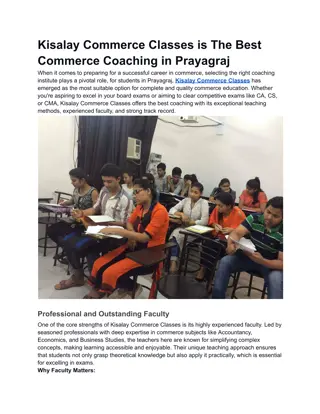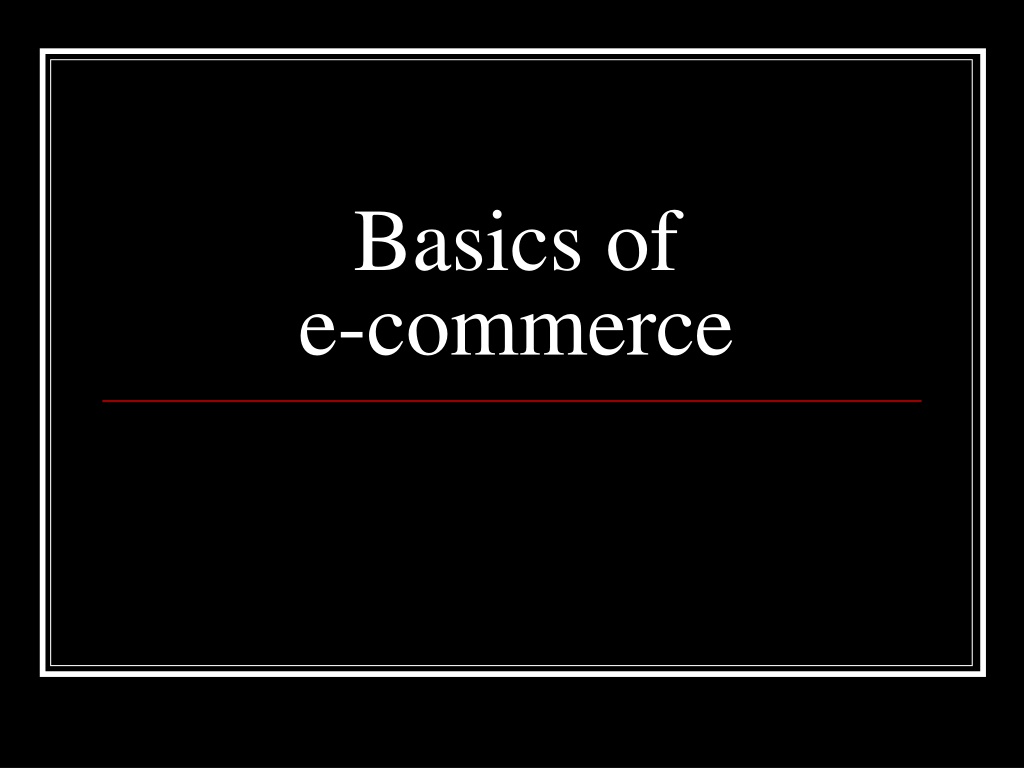
Understanding the Evolution and Working of E-commerce Models
Explore the evolution of e-commerce from transaction-oriented to customer-centric, the working model, and the features that shape online business. Learn about infomediaries and their role in gathering and organizing data for businesses to thrive in the digital marketplace.
Uploaded on | 0 Views
Download Presentation

Please find below an Image/Link to download the presentation.
The content on the website is provided AS IS for your information and personal use only. It may not be sold, licensed, or shared on other websites without obtaining consent from the author. Download presentation by click this link. If you encounter any issues during the download, it is possible that the publisher has removed the file from their server.
E N D
Presentation Transcript
Basics of e-commerce
ebusiness What is e-commerce? "e-commerce" means using the Internet or related technologies for any of the normal business operations. The use of information technologies to transform business processes and to take advantage of the many features of the Web environment Using ICT for buying, production, distribution or management. and communication selling, advertising,
Evolution of e-commerce Transaction-oriented e-commerce during 1990 s Customer-Centric e-commerce
Features: dart Customer is the king Entry barriers are low It leads to disintermediation: infomediaries are there Economies of scale depends upon number of transaction
Traditional business vs. e- commerce Product-centric (Focus differentiation innovation) Proper processing possible. Focus on customers (Customers are a part of designing the product e.g. P&G Advisors program) Collection, storage dissemination of information is more important as volume of data is high Across the globe on product and analysis of and not and data Limited regions geographical
Formed from a combination of the words information and intermediary, an infomediary is a Web site that gathers and organizes large amounts of data and acts as an intermediary between those who want the information and those who supply the information. The infomediary is a neutral entity, a third-party provider of unbiased information; it does not promote or try to sell specific products in preference over other products. It does not act on behalf of any vendors. Another type of infomediary, and one that is not necessarily Web- based, is one that provides vendors with consumer information that will help the vendor develop and market products. The infomediary collects the personal information from the buyers and markets that data to businesses. The advantage of this approach is that consumer privacy is protected and some infomediaries even offer consumers a percentage of the brokerage deals.
Infomediaries Websites that are replacing the distributors and dealers. From the simple role of a search engine, they have evolved into 3 models: 1. Aggregators: It can selectively extract information from a Web site, couple it with additional data from other sources including those of its competitors, and make the necessary fine-tuning comparisons. for intelligent 2. Online auctioneers 3. Online exchanges
Basic rules of e-commerce: Know your customer Profiles and preferences Combination of products and services to be offered. Best methods for customers support Marketing efforts for different segments New products and services that should be developed
segmen1 Segment customers Using e-commerce segmentation can be done on the basis of the complex factors also such as channel preference, profitability, etc. Collaborative segmentation is also possible, where customers can choose from a flexible menu of offerings, configure them to suit their preferences and select the segment they fit in.
Avoid the Silo effect: The scattered information across different files, in different formats and at different locations is known as Silo effect.
Predictive modeling Building models for the future on the basis of existing information on customer behavior. How much money a customer will spend on your products? How likely someone is to respond to an offer? How likely someone is to stop using your services?
Multi-channel strategy Identify customer channel preference Synchronize channels for seamless integration Understand the cost structure of each channel
Personalize the customer experience: Individualize the content Enable customers to customize the environment
Optimize the value of every customer: Macro level-optimize the lifetime customer value. Micro level- optimizing the value for the individual customers by offering the most suitable products and for the organization by increasing revenues.
e-commerce infrastructure: Centralized data storage Update information dynamically Focus on back-office systems Scalable systems Support all platforms and devices Support global implementation





